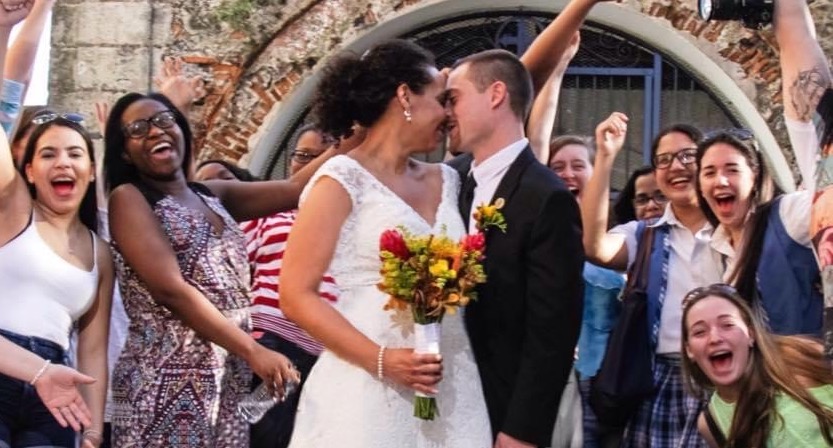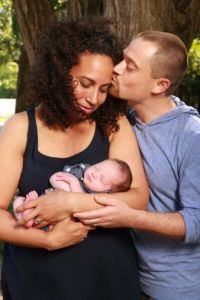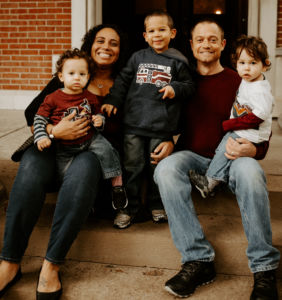
Trigger warning: This essay contains racial slurs.
The arrest happens as I lay asleep next to my husband, my babies just in the next room. Police officers drag me outside, hissing and screaming obscenities related to the color of my skin. Neighbors watch as officers forcefully toss me into the back of a musty squad car. My crime: having married a White man.
That isn’t my story, but a few decades ago, it was the story of Mildred and Richard Loving, and it could have been my story, too. Even as I type that, I shudder. I want to talk to someone about how mad it makes me, how scared. But, like so many, I was raised to avoid discussions about race, to be “color blind.” The lasting impact of that era is a current reality wherein so many in my community don’t know the, some very recent, history of what Black and Brown people went through just to be allowed to simply exist. By ignoring our country’s checkered history, we miss the opportunity to see how the past impacts us now.

For example, the Lovings, who, in 1958, had to drive to Washington D.C. to exchange wedding vows because marrying in their home state of Virginia was illegal due to their different skin tones. They were arrested shortly after their nuptials and banned from returning home after their release. Several years later, the couple launched a legal case against the racist law, and, on June 12, 1967, the Supreme Court’s decision in Loving v. Virginia made interracial marriage legal nationwide. 1967 … that’s just 13 years before I was born.
While that court case was monumental, our country’s relationship with race remains complicated at best. Even as our nation grows more diverse — perhaps because of it — divisiveness is easy to find, especially for those of us with black and brown skin who can’t avoid it so easily. A bystander shouting “White Devil” at my husband as we’re out for an evening stroll near our home. An elderly man declaring me a “ni**er bitch” as we ride past him on our bikes one summer evening. Wedding attendees loudly asking about the lone Black girl on the dance floor. Waiters asking whether to split the check even as we hold hands while wearing wedding rings.
Although 94 percent of U.S. adults report their approval of marriages between Black and White people, interracial and interethnic couples are not without scrutiny and are perhaps more accepted in theory than reality. My husband and I talk about race — its impact on our views and experiences as well as how we are seen by others. I explain how empowering it was, having grown up in majority-White spaces, to build a community largely based on shared Latino heritage as a young adult. How I take a mental inventory of nonwhite individuals — or lack of them — when I enter a room. Or why it is difficult for me to compartmentalize the political views of friends and family members because their support for certain policies and candidates feels like a challenge to who I am.

These conversations haven’t always been easy. But, in those vulnerable moments, we’ve built trust and learned from one another’s perspectives. We also talk about race with our boys, discussing their observations instead of shunning them and pointing out the diversity around us because we believe it is important to acknowledge our differences. Not to separate or define but in recognition that skin color is part of an individual’s unique self.
Each year on Loving Day, our family celebrates that mommy and daddy were able to get married and recognize it wasn’t always possible. We have found joy in getting together with other interracial and interethnic families who also value the meaning of this special day. I hope that as a community, we can embrace Loving Day in celebration of how far we’ve come as a country while acknowledging there is so much more work to do.
Main image by Larry Gindhart Photography.
Kathy Souchet-Downey has worked with the Indianapolis immigrant and Latino communities for almost 20 years. She is passionate about her community, family, and wine. Kathy is an Indy Maven editorial board member.
All of our content—including this article—is completely free. However, we’d love if you would please consider supporting our journalism with an Indy Maven membership.








